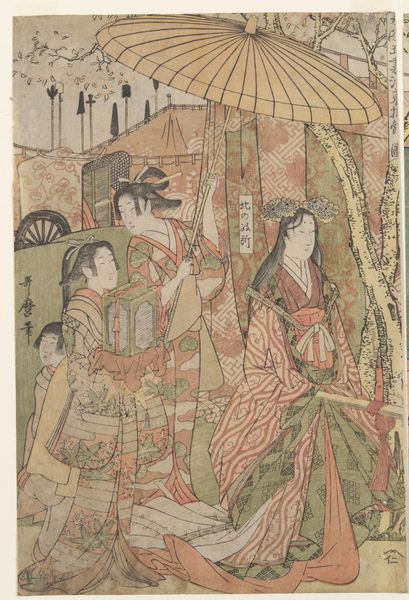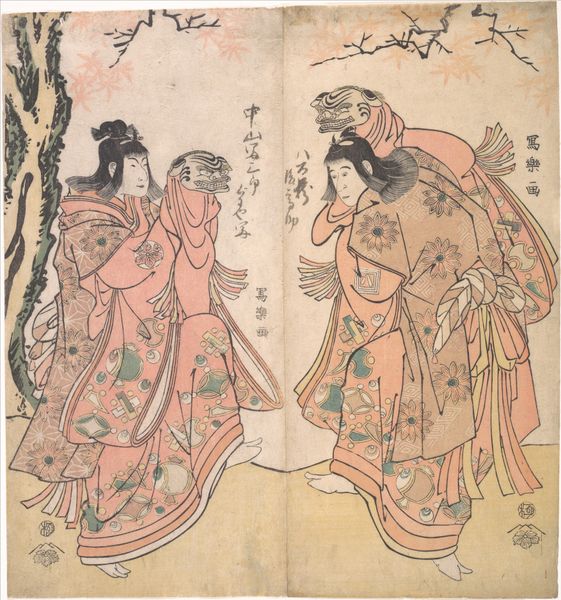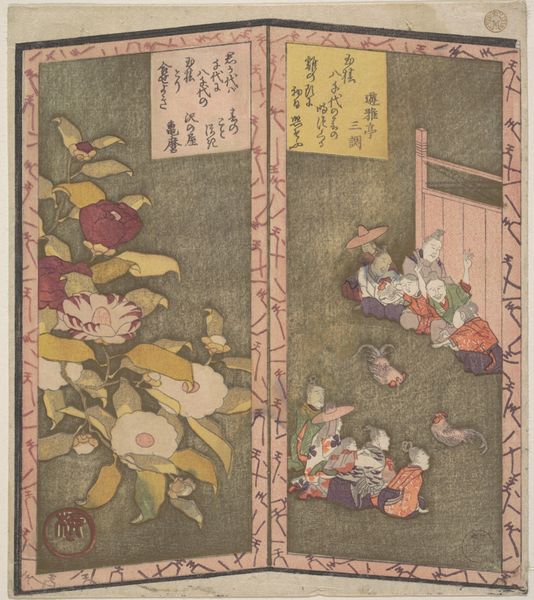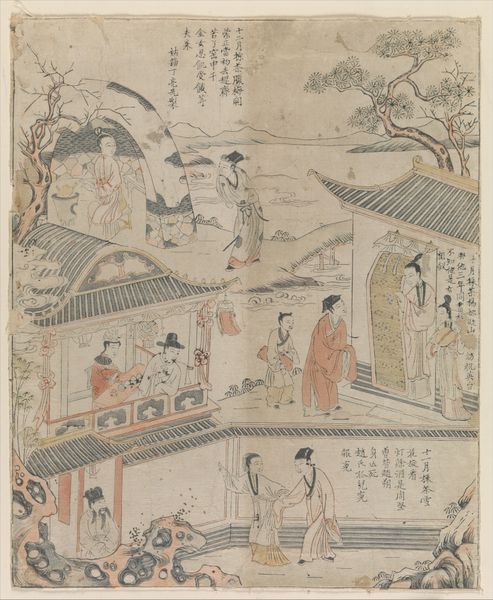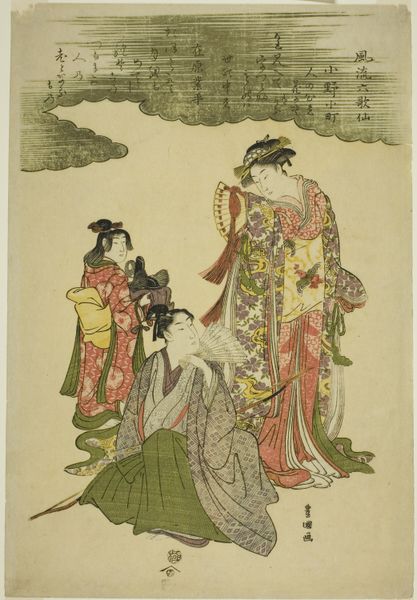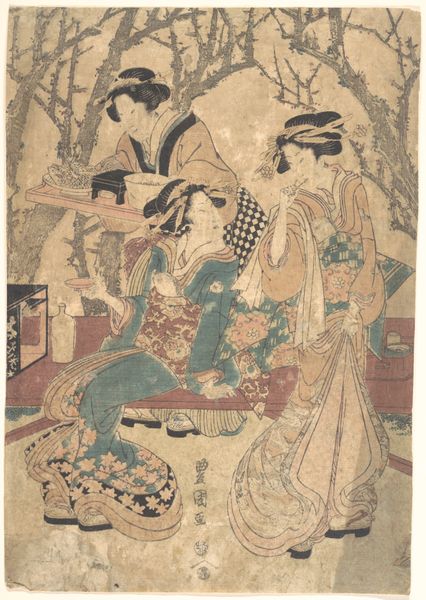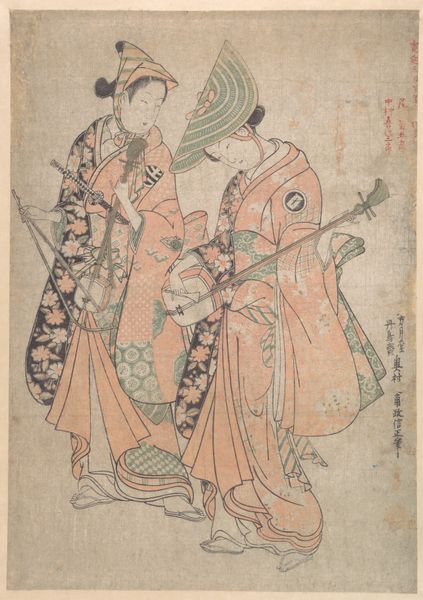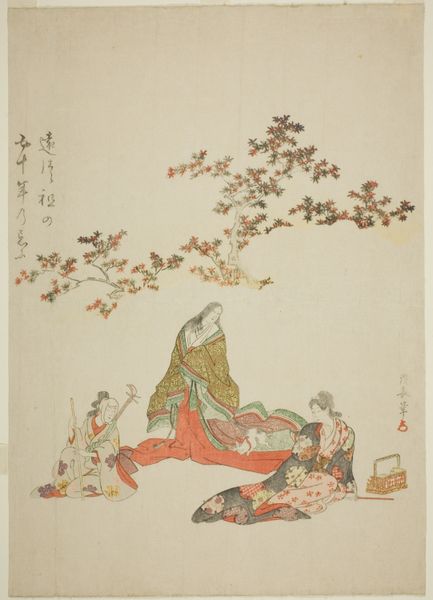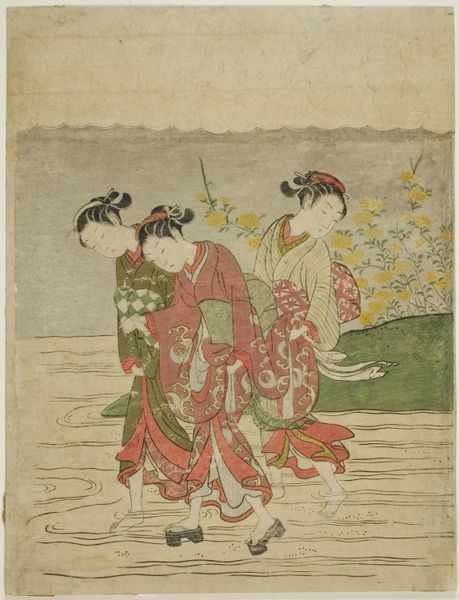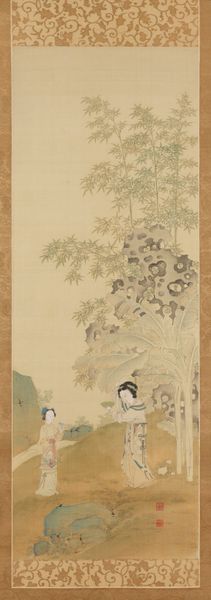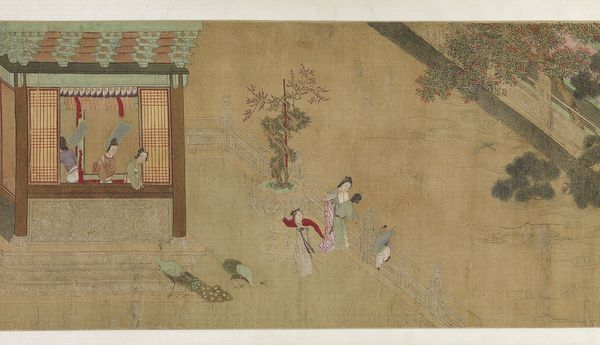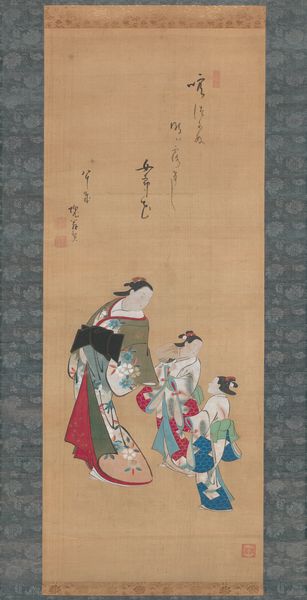
Seiobo (Queen Mother of the West) and tortoise, from an untitled hexaptych depicting a pair of folding screens c. 1825
0:00
0:00
print, woodblock-print
#
portrait
# print
#
asian-art
#
ukiyo-e
#
japan
#
woodblock-print
Dimensions: 21.4 × 18.8 cm
Copyright: Public Domain
Curator: This print, held here at the Art Institute of Chicago, is by Ryūryūkyo Shinsai. Dating from around 1825, it's part of an untitled hexaptych—this segment depicts Seiobo, the Queen Mother of the West, with a tortoise. It's a beautiful example of a ukiyo-e woodblock print. Editor: My first thought is it’s like a fantastical stage set. The colors, even faded with time, create a dreamlike quality. There’s such gentle movement even though the composition feels so formal. Curator: Right, Shinsai was a master of integrating mythological themes with everyday life. He skillfully combines the rigid lines of Ukiyo-e with softer rendering techniques for the landscape, playing with foreground, and background using the textured quality of the washi paper. Editor: And what about the choice of subject? The Queen Mother, almost obscured by a haze of attendants and greenery, almost blends into the environment. But the tortoise... It’s so visually striking, bearing an entire mountain on its back! Curator: The pairing speaks volumes about prosperity and longevity. The tortoise, itself a symbol of long life, carries a symbolic mountain. Seiobo herself, representing immortality, deepens the wish for an enduring legacy for those who may have commissioned such work. The very act of reproducing the artwork for distribution by Ukiyo-e would have also broadened the social appeal of such values. Editor: I hadn't considered the printing itself. Woodblock printing… layers of labor creating multiplied images. It takes it away from being purely a scene of wealth. It brings such concepts down to earth a little. You can almost feel the craftsman's hand. Curator: Absolutely. The artistry also extends to the choice of pigments and their interactions with the wood and paper. These details emphasize the intersection between labor, materiality, and cultural significance. Editor: Looking again, I feel less the theatrical scene and more a celebration of quiet strength. A kind of endurance I would hope for. It makes you wonder who first owned and viewed such images? Curator: Reflecting on Shinsai's choices, we start to see a beautiful mix of mythical symbolism and material practices in art production. Editor: It’s fascinating how, from a seemingly decorative print, so many layers of meaning and production begin to emerge when we take the time to explore the material making and values it upholds.
Comments
No comments
Be the first to comment and join the conversation on the ultimate creative platform.
